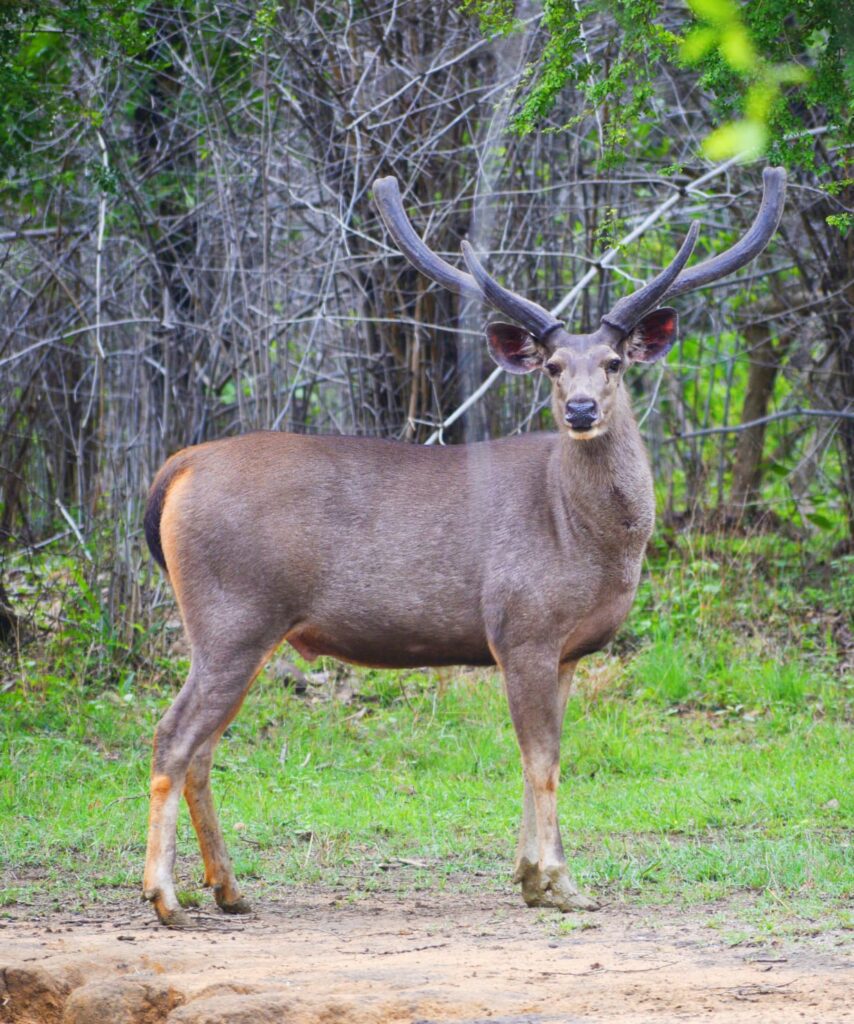
Sambar Deer Spotted at Tadoba National Park
Introduction to the Sambar Deer (Rusa unicolor)
The Sambar Deer is one of the largest deer species found in Asia and a prominent resident of India’s forests. With its towering antlers, muscular frame, and alert presence, it commands attention wherever spotted. Unlike the more common chital, the Sambar has a uniform dark brown coat and a solitary nature, making each sighting special.
Sambar Deer in Tadoba Andhari Tiger Reserve
Tadoba, Maharashtra’s oldest and largest national park, is home to a thriving population of Sambar deer. These animals are often seen grazing near waterholes, deep inside bamboo thickets, or standing alert on forest paths. As the primary prey species for the Bengal Tiger, the Sambar plays a crucial role in maintaining Tadoba’s predator-prey balance.
Distinguishing Features and Behavior of the Sambar
Antlers and Size
Male Sambars are recognized by their large three-tined antlers, which can grow up to 110 cm. They shed and regrow them annually, with each cycle producing stronger antlers.
Solitary Nature
Unlike chital, which gather in large herds, Sambar are often solitary or found in small groups. Males, in particular, are usually seen alone, while females may stay with calves.
Feeding Habits
Sambar are browsers and grazers, feeding on grasses, shrubs, fruits, and tender shoots. Their adaptability allows them to thrive across diverse forest types in Tadoba.
Ecological Role of Sambar in the Jungle
The Sambar is more than just a deer — it’s the jungle’s alarm system. Their sharp honking calls echo through the forest whenever a predator like a tiger or leopard is nearby. This warning not only helps other deer but also benefits birds and smaller mammals in the area.
Being one of the tiger’s preferred prey species, the Sambar helps sustain Tadoba’s big cat population, keeping the ecosystem balanced and thriving.
Fun Facts About the Sambar Deer
- Sambar are excellent swimmers and often enter lakes and ponds to cool down or escape predators.
- Their antlers are shed every year, and the new growth is covered in a velvet-like skin.
- Tigers rely heavily on Sambar as prey, especially in reserves like Tadoba.
- Their alarm call is so loud and distinct that even experienced naturalists use it to track predators.
Wildlife Photography in Tadoba: Capturing the Perfect Shot
Photographing a Sambar in Tadoba is always rewarding. Their calm stance, contrasted with the lush forest backdrop, creates a regal composition. Early mornings and late evenings are the best times to capture them, especially near watering holes.
This particular image, taken at Tadoba, beautifully frames the Sambar’s antlers and its sharp gaze, offering a glimpse into the wild heart of India.
